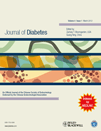Sex differences in lipid profiles in relation to the progression of glucose abnormalities
Abstract
Background: In the present study, we investigated the role of changes in blood lipids in the abolition of the lower cardiovascular risk associated with the female gender in individuals with type 2 diabetes mellitus (T2DM).
Methods: An oral glucose tolerance test (OGTT) was performed in 1091 consecutive patients (478 men and 613 women) and patients were divided into groups as follows: (i) those with normal glucose tolerance (NGT; n = 589); (ii) those with pre-diabetes (pre-T2DM), who were further divided into those with impaired fasting glucose (IFG; n = 212), impaired glucose tolerance (IGT; n = 84), and both IFG and IGT (IFG/IGT; n = 102); and (iii) those with T2DM (n = 104). Total cholesterol, triglycerides, high-density lipoprotein–cholesterol (HDL-C), low-density lipoprotein–cholesterol (LDL-C), apolipoprotein (apo) A-I, apoB, and the apoB:apoA-I ratio were determined in each patient. Differences in lipids between the different groups were assessed using Student’s t-test.
Results: Significantly higher triglyceride levels and an apoB:apoA-I ratio were found in NGT men (P < 0.0001), along with lower HDL-C and apoA-I (P < 0.0001). Men in the pre-T2DM group maintained a higher apoB:apoA-I ratio (P < 0.05) and lower HDL-C (P < 0.0001) compared with women. In the T2DM group, only HDL-C was lower in men compared with women (P < 0.05).
Conclusions: The progression of glucose intolerance from NGT to pre-T2DM and T2DM exhibits striking sex differences regarding the lipid profile. The data demonstrate a worsening of plasma lipid composition in women who become diabetic. This could explain, at least in part, the loss of the more favorable cardiovascular risk normally associated with NGT women.




